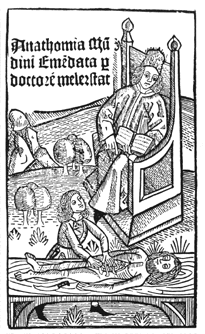
Back প্রসেক্টর Bengali/Bangla Prosektor Danish Prosektor German Prosector Spanish Prosektori Finnish Prosecteur French Prosector Galician Prosektoro IO Prosector Dutch Prosector Portuguese

A prosector is a person with the special task of preparing a dissection for demonstration, usually in medical schools or hospitals. Many important anatomists began their careers as prosectors working for lecturers and demonstrators in anatomy and pathology.
The act of prosecting differs from that of dissecting. A prosection is a professionally prepared dissection prepared by a prosector – a person who is well versed in anatomy and who therefore prepares a specimen so that others may study and learn anatomy from it. A dissection is prepared by a student who is dissecting the specimen for the purpose of learning more about the anatomical structures pertaining to that specimen. The term dissection may also be used to describe the act of cutting. Therefore, a prosector dissects to prepare a prosection.
Prosecting is intricate work where numerous tools are used to produce a desired specimen. Scalpels and scissors allow for sharp dissection where tissue is cut, e.g. the biceps brachii muscle can be removed from the specimen by cutting the origin and insertion with a scalpel. Probes and the prosector's own fingers are examples of tools used for blunt dissection where tissue may be separated from surrounding structures without cutting, i.e. the bellies of biceps brachii and coracobrachialis muscle were made clearer by loosening the fascia between the two muscles with a blunt probe.